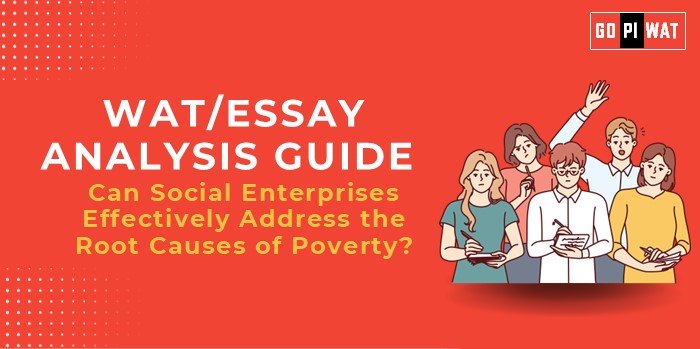📋 Can Social Enterprises Effectively Address the Root Causes of Poverty?
🌐 Understanding the Topic’s Importance
Social enterprises sit at the intersection of social impact and business sustainability. They provide innovative solutions to poverty while ensuring financial independence. Discussing their effectiveness showcases strategic thinking, critical analysis, and social consciousness—key attributes for future leaders.
🗓️ Effective Planning and Writing
- ⏱️ Time Allocation:
- Planning: 5 minutes
- Writing: 20 minutes
- Reviewing: 5 minutes
- 📊 Preparation Tips:
- Collect examples of impactful social enterprises.
- Highlight achievements and note common criticisms of the model.
📝 Introduction Techniques for Essays
- ⚖️ Contrast Approach: “While billions are invested in poverty alleviation programs, 9% of the global population remains below the poverty line. Social enterprises offer a fresh perspective by blending innovation with impact.”
- 💡 Solution-Based Approach: “Social enterprises aim to resolve the poverty trap through targeted interventions like education, healthcare, and financial inclusion.”
📚 Structuring the Essay Body
- 🏆 Achievements:
- ✨ Improved Literacy Rates: Organizations like Pratham Education Foundation have impacted millions of underprivileged children.
- 📊 Employment Opportunities: Enterprises like Grameen Bank have created sustainable livelihoods for low-income individuals.
- ⚠️ Challenges with Comparative Analysis:
- 💰 Funding Constraints: Social enterprises often struggle to secure hybrid funding models.
- 🌍 Examples: Grameen Bank and Aravind Eye Care highlight how effective partnerships can overcome resource gaps.
- 🔮 Future Outlook:
- 🤝 Partnerships: Collaborating with technology providers and governments can amplify impact.
- 📱 Technology Integration: Leverage digital platforms for scaling operations.
📄 Concluding Effectively
- ⚖️ Balanced Conclusion: “While social enterprises show promise, bridging the gap between intention and large-scale impact remains critical.”
- 🌍 Global Comparison Conclusion: “By adopting scalable practices and collaborative models, social enterprises can emulate success stories like Bangladesh’s Grameen Bank.”
🌟 Recommendations for Sustainable Progress
- 💰 Promote Hybrid Funding Models: Combine grants, investments, and revenue generation for sustainability.
- 📜 Enhance Policy Support: Governments should incentivize social enterprises through tax breaks and grants.
- 📱 Leverage Technology: Use digital tools to scale solutions and reach underserved communities.
📄 Sample Short Essays
- ⚖️ Balanced Perspective: “Social enterprises merge business with impact. Models like Grameen Bank prove their potential, but scalability remains a challenge. For sustained success, these enterprises must integrate technology, policy support, and innovative funding.”
- 💡 Solution-Oriented: “To address poverty effectively, social enterprises must focus on scalability and partnerships. By integrating digital platforms, enterprises like Aravind Eye Care have reached millions, showcasing the power of collaboration.”
- 🌍 Global Comparison: “Social enterprises in countries like the UK contribute significantly to GDP. For nations like India, adopting similar models can transform poverty alleviation efforts sustainably.”


